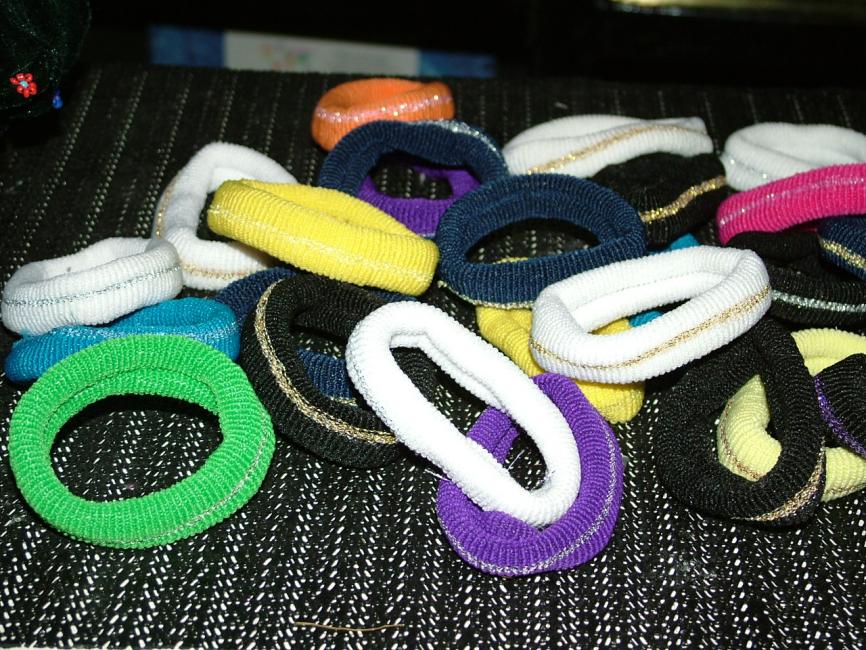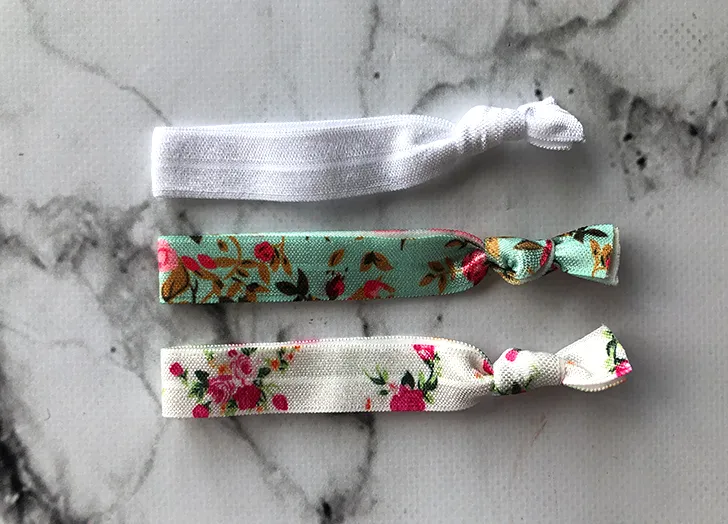Gently wiggle and twist the hair tie while sliding it down your hair to minimize tugging and discomfort.
Hair ties can be a convenient and practical accessory for keeping hair in place, but they can also become tight and uncomfortable over time.
Dealing with a stuck hair tie, whether from a long day or tangled hair, can be quite frustrating.
Now, how to loosen a hair tie without hurting your hair or scalp?
There are several gentle and easy methods to loosen a hair tie without causing damage to your hair or discomfort.
In this blog post, we’ll discuss simple hair-friendly techniques for loosening your hair tie and avoiding unnecessary hair breakage or discomfort.
How to Loosen A Hair Tie Without Hurting Hair?

Loosening a hair tie without causing damage to your hair requires a gentle approach. Randomly Brushing for hair tie loosening might cause hair breakage or hair fall.
So, how to loosen a hair tie without hair breakage or hurting hair? Follow these step-by-step guidelines to ensure a painless and hair-friendly process:
Step 1: Find a Comfortable Spot
Locate a calm and well-lit area where you can comfortably address the tight hair tie without further rushing or straining your hair.
Step 2: Relax the Scalp
Gently massage the area around the hair tie to encourage blood circulation and help relax the scalp. This can make the hair tie slightly easier to move.
Step 3: Wet Your Hair
Spritz the hair tie and the surrounding area with water. Slightly moistening the hair can make it more pliable and easier to slide the hair tie off.
Step 4: Use Fingers to Loosen
Using your fingers, gently pry the hair tie away from your scalp. Start by holding the hair tie close to your head and slowly working it away, inch by inch.
Step 5: Add Some Lubrication
Apply a small amount of hair conditioner, oil, or detangling spray to the hair tie to reduce friction. This can make it glide more smoothly along the hair shaft.
Step 6: Twist and Slide
Hold the hair tie between your fingers and gently twist it while simultaneously sliding it away from your scalp. Twisting can help reduce the tension on your hair as you loosen the tie.
Step 7: Divide and Conquer
If the hair tie is wrapped multiple times around your hair, carefully divide your hair into smaller sections. This can help reduce the pressure on individual strands and make it easier to remove the tie.
Step 8: Be Patient
Take your time and avoid rushing the process. Slow, gentle movements are key to preventing hair breakage or discomfort.
Step 9: Rehydrate Your Hair
After removing the hair tie, hydrate your hair with a leave-in conditioner or a hydrating hair mist to counteract any dryness caused by the tight tie.
Our guidelines will loosen your tight hair tie safely and effectively without damaging your precious locks.
Why Does Hair Tie Become So Tight?

Hair ties can become extremely tight due to a combination of undetermined factors, including,
Stretching and Wear: Hair ties can stretch and lose their original elasticity over time. When this happens, they may not provide the same flexibility to accommodate your hair, leading to a tighter grip as they attempt to hold the hair in place.
Hair Type: Different hair types have varying degrees of thickness and texture. Thicker or coarser hair tends to put more pressure on the hair tie, causing it to tighten as it attempts to hold the hair together.
Incorrect Application: Tying hair too tightly initially can make the hair tie even tighter as it settles. Sometimes, unintentional tightness occurs when the hair tie is wound too many times around the hair, creating excessive tension.
Activity Levels: Engaging in physical activities, such as sports or exercise, can cause the hair tie to become tighter as it tries to keep the hair in place amidst movement and sweat.
Humidity and Temperature: Environmental factors like humidity can affect the size of the hair tie over time. In humid conditions, hair ties can soak up moisture from the air, which might cause them to expand and tighten on the hair.
Hair Tie Material: The material of the hair tie can influence its ability to maintain elasticity. Cheaper or older hair ties made from less elastic materials might lose their ability to stretch and return to their original shape, resulting in a tighter fit.
Multiple Uses: Using the same hair tie repeatedly can make it lose its stretchiness and become harder to expand, resulting in a tighter fit when used.
Sleeping with Hair Ties: Sleeping with a hair tie in your hair can make it tangled and tighter, especially if you toss and turn during the night.
Knots or Tangles: Sometimes, hair can become knotted or tangled within the hair tie itself. This can cause the hair tie to grip the hair more tightly than intended.
Breakage and Snapping: If a hair tie is about to break or snap, it can tighten around the hair more as its integrity is compromised, leading to a sudden and uncomfortable sensation.
However, avoid wearing hair ties that are too tight because they can lead to discomfort, hair breakage, and even hair loss.
Choose the hair ties that provide a secure hold without excessive pressure on your hair.
FAQs
Are there special hair ties that don’t get too tight? Some hair ties are designed with less tension, reducing the risk of becoming overly tight. Look for options labeled as “no-damage” or “gentle.”
Can I use water to loosen a hair tie? Yes, lightly dampening your hair can help ease the removal of a tight hair tie. Wet hair can be more pliable and less prone to breakage.
What if the hair tie is stuck in a knot? If the hair tie is knotted, try gently unraveling it by using a thin, pointed object like a needle or pin.
Is there a technique to prevent hair ties from getting too tight? Avoid wrapping the hair tie too many times around your hair. Choose the looser loops to avoid excessive tension.
Can leaving a hair tie in for too long cause damage? Prolonged wear of tight hair ties can lead to hair breakage and discomfort. It’s important to vary your hairstyle and give your hair breaks.
Are there alternatives to hair ties that won’t be too tight? Hair claws, clips, and fabric scrunchies are gentler options that exert less pressure on your hair while still keeping it in place.
How do I maintain the elasticity of my hair ties? Avoid stretching hair ties excessively during use, and store them in a dry, cool place to help maintain their elasticity.
Could a tight hair tie cause hair loss?
Yes, a tight hair tie can cause hair loss due to the consistent tension and strain on hair follicles, resulting in damage and breakage over time.
Conclusion
Hair ties can become tight due to factors such as overstretching, sweat, and hair texture.
So, how to loosen a hair tie without hair breakage or hair damage?
One can try spraying the tie with a bit of water or applying a lubricant like hair oil to loosen a hair tie. Alternatively, gently stretching the hair tie or using your fingers to loosen it can also be effective.
It is important to handle hair ties carefully to avoid hair breakage or hair damage.

